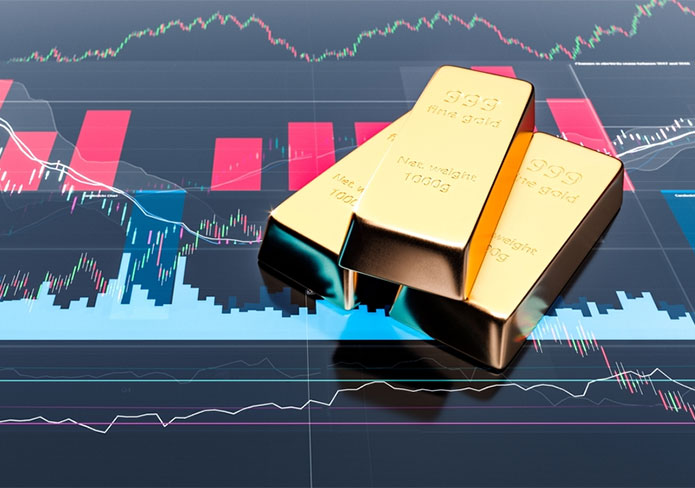

Is trading gold really one of the toughest markets out there? Well, many seasoned traders will tell you that it's quite a unique experience. Unlike other markets, gold doesn't follow the usual trading rules, and this often leads to debates about whether it should be seen as a commodity or a form of currency. One thing's for sure: the gold market is in a league of its own. It combines elements of various asset classes and markets while maintaining its own distinctive personality.
If you're looking to succeed in gold trading, whether you're thinking short-term gains or long-term strategies (which can be incredibly profitable), you need to keep several crucial factors in mind and develop a specific set of skills.
Insider Tips for Profitable Gold Trading
Get ready to enhance your gold trading game with these insider tips. Whether you're a seasoned trader or just starting, these tips will help you navigate the intricate world of gold markets effectively.
Size Matters – Keep it in Check
When it comes to trading, whether in the gold market or any other, the most crucial strategy to master is managing your position sizes. Think of this as the "Holy Grail of Trading".
In general, the probability of your trade being successful should determine your position size. This is why long-term investments typically involve larger positions compared to short-term trades. If you're just starting out, your top priorities should be avoiding overtrading and not taking on more leverage than you can handle. In fact, it's wise to steer clear of leverage when you're starting your gold trading journey.
But what's too much? While this isn't investment advice, it's an informed observation based on research and literature. If the potential loss on a trade could exceed 2% of your capital, it's probably too large.
In fact, smaller positions, which limit potential losses to 1% or even 0.5% of your capital, might be a safer bet for novice traders. This means that if your stop-loss is triggered and a loss occurs, it shouldn't exceed a certain percentage of your portfolio (somewhere between 0.5% to 2% of your capital).
We get it; this might sound tedious, and you're here to make money, not experience losses. However, this discipline is incredibly important. While there will likely be many winning trades, you must accept that some will not go your way. The key is to ensure that these setbacks don't inflict irreversible damage on your portfolio.
Don't Overlook the Potential of Long-Term Investments in Gold
Even if your main focus is on actively trading gold, it's a wise move to allocate a portion of your capital to long-term investments. This approach can help reduce the overall volatility of your returns and bring more stability to your gains.
If you'd like personalized guidance on implementing this strategy effectively, don't hesitate to contact our experts at Orient Finance. They can provide valuable insights and tailor a plan that aligns with your unique trading goals and risk tolerance.
Considering the Broader Market Perspective
When analyzing the market you intend to trade, don't limit your focus to just that market. In today's global economy, no market operates in isolation. This holds true for gold and other precious metals.
Their price movements are often closely tied to currency market fluctuations, stock market performance, interest rates, Federal Reserve statements, and even the performance of gold-related stocks and general equities.
Before opening a trading position, it's essential to assess which markets have moved in tandem with or in opposition to gold in the past. Ensure that the prevailing conditions in these related markets are likely to support the trading position you're planning to take.
This holistic approach will give you a better understanding of the forces at play in the financial landscape.
Gain Insight into Asset Volatility
When considering gold futures and gold-backed ETFs in comparison to senior gold miners (GDX ETF) and junior gold miners (GDXJ ETF), it's essential to recognize the aspect of volatility. Senior gold miners can be considered high-beta assets, meaning they exhibit a greater degree of sensitivity or "leverage" concerning gold price movements.
For example, senior gold miners tend to experience more significant price swings than the actual gold price, especially over an extensive sample period. Meanwhile, junior gold miners often exhibit even greater price fluctuations compared to their senior counterparts. Therefore, it's imperative to align your trading positions with your individual risk tolerance.
Assess the Effectiveness of Each Indicator
Before you start using any trading indicator in the gold market or any other market, especially if real money is on the line, take a moment to assess how well it actually works. Just because it showed promise in the past doesn't mean it's a sure bet for the future. If it's not delivering as expected, consider it a red flag.
Just as someone's good reputation doesn't guarantee they'll always be honest, an indicator's track record doesn't guarantee future success. But if an indicator consistently falls short of your expectations, it's a sign that it might be time to look elsewhere for information and advice.
Explore RSI and Stochastic Indicators for Gold Trading
When it comes to trading gold, silver, and mining stocks, seasoned traders have found RSI (Relative Strength Index) and stochastic indicators to be valuable tools over many years. Additionally, MACD (Moving Average Convergence Divergence) can come in handy, especially for assessing very long-term trends.
While other indicators can certainly have their uses, it's crucial to scrutinize their effectiveness thoroughly before relying on them to drive your trading decisions.
Adapt Your Indicators as Needed
If you find that a particular indicator is working "almost as well" as you'd like it to but see room for improvement, don't hesitate to make modifications. For instance, let's take the RSI indicator. If you notice promising selling opportunities occurring when this indicator reaches around 65 (rather than the classic 70 level), there's potential for increased usefulness and profitability.
You can use these strategies:
Adjust Overbought/Oversold Levels: You can consider adding an additional overbought/oversold level, and when the indicator breaches this new threshold, it generates a signal. In this scenario, it would signify a sell signal.
Modify Indicator Parameters: Another approach is to alter the indicator's parameters, deviating from the standard values to better suit your trading strategy.
By customizing your indicators to align with your specific trading preferences, you can potentially enhance your trading outcomes and capitalize on more tailored opportunities.
Choosing the Ideal Broker for Your Gold Trading Journey
Selecting the right broker is a pivotal step in your gold trading venture. Before you begin, you'll need to determine your preferred investment vehicle, whether it's ETFs and ETNs, mining stocks, or derivatives like futures contracts, options, or CFDs.
Here's a checklist of what to consider when assessing potential brokers:
Cost Assessment: Thoroughly examine all costs associated with your chosen broker. This includes commissions, transaction spreads, currency conversion expenses, and account management fees. Be sure to calculate how these costs may impact your overall returns.
Trading Instruments: Ensure that the broker offers the specific trading instruments you plan to use. Different brokers may have varying options for ETFs, mining stocks, or derivatives, so verify their availability.
Platform and Tools: Assess the broker's trading platform and the array of tools it offers. User-friendliness and the availability of analytical tools can greatly influence your trading effectiveness.
Customer Support: Reliable customer support can be crucial, especially in fast-paced markets like gold. Confirm the availability and responsiveness of the broker's customer service team.
Research and Educational Resources: Consider whether the broker provides valuable research materials, market insights, and educational resources to support your trading decisions.
User Reviews and Reputation: Research user reviews and the broker's reputation in the trading community. Feedback from other traders can offer valuable insights into the broker's performance and reliability.
Start your Gold Trading Journey with Orient Finance!
At Orient Finance, our mission is to ensure that your gold trading journey is nothing short of seamless and successful. We are dedicated to equipping you with all the essential knowledge and tools necessary to navigate the intricacies of gold trading.
Through Orient Finance, gold is traded as Contracts for Difference (CFDs) and Over-the-Counter (OTC) derivatives. With our comprehensive support and user-friendly online trading platform in the UAE, you can confidently engage in gold trading, harnessing the potential of this precious metal to enhance your financial portfolio.
Your success is our priority, and we're here to guide you every step of the way on your gold trading adventure!









